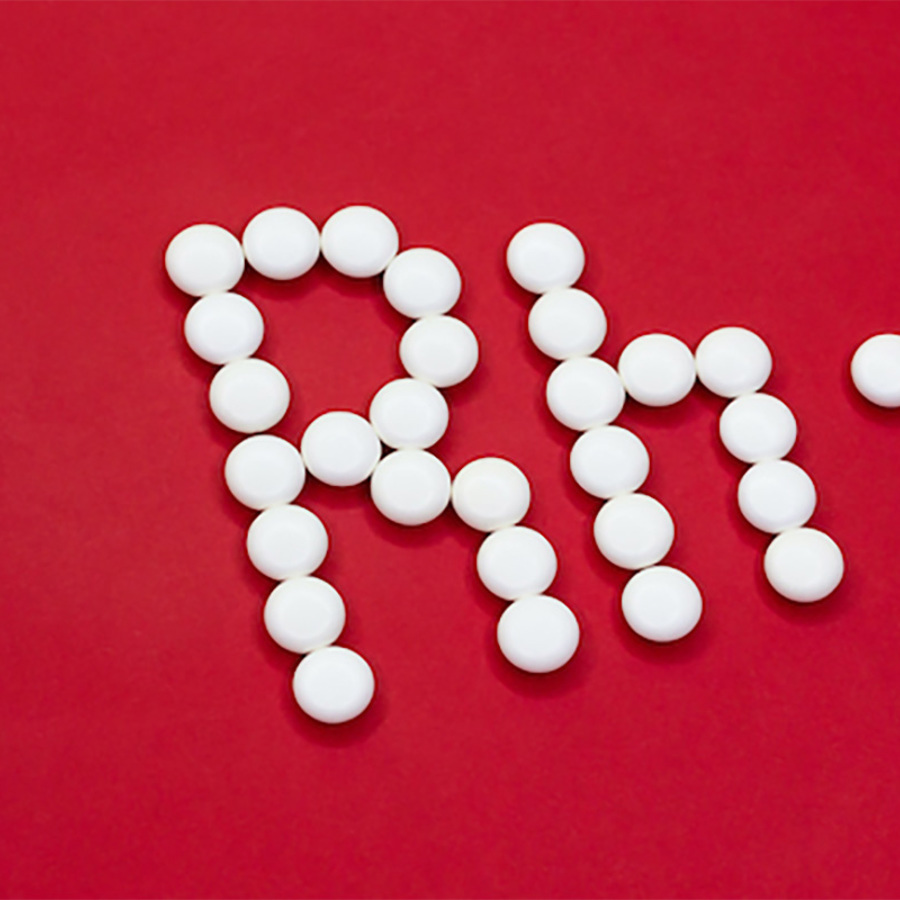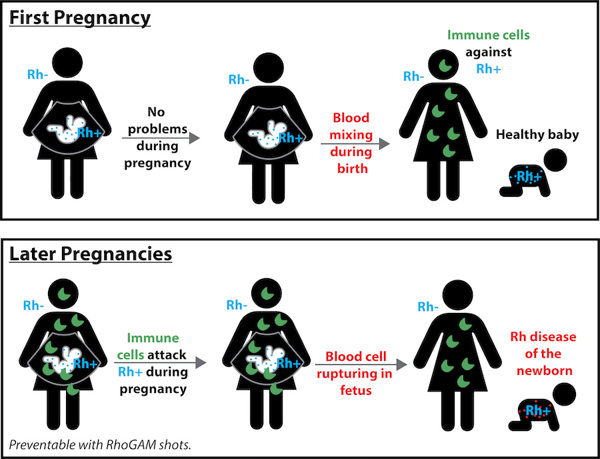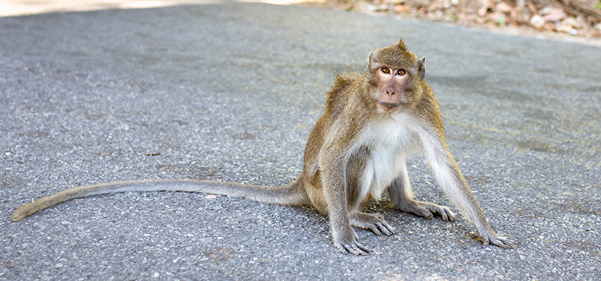
Is it possible for Rh negative parents to have an Rh positive child?
May 24, 2005

- Related Topics:
- Rh factor,
- Blood type,
- Common questions,
- Complex traits
A curious adult from India asks:
“Is it possible for 2 Rh negative parents to produce a Rh positive child? I am pregnant with my second child. My blood type is O-. My husband and daughter both have A-. At my last OB appointment I was told that at my next visit I would have an antibody screen and most likely need a Rhogam shot. I know this is administered as a precaution in case the baby is Rh+. However, I understood this to be impossible since both my husband and I are Rh-. When I questioned the nurse, I was quite surprised when she told me that it IS possible to have an Rh+ child because of recessive Rh+ genes. Is this true? All the information I have found so far leads me to believe this is impossible. (And yes, I am 100% certain beyond a shadow of a doubt that my husband is the father of my child).”
The answer to this really important question is yes.
The reason is that people who test negative for Rh aren't always Rh-. The test isn't always sensitive enough to get the right answer (although it usually does). And it only tests for one of the two Rh genes. It doesn't test for any of the other genes that can cause similar problems.
To understand how the test could go wrong, we first need to dig a bit deeper into Rh biology and our immune system.
Rh status is usually explained as this simple, one gene trait. Even we have fallen into this trap in our own answers.
But there are actually two Rh genes, RhD and RhCE. There are also other genes with names like Kell, Duffy and Kidd that can cause similar problems.
Blood type and the immune system
Problems can happen when the mother has one version of one of these genes and her baby has a different version. The reason this can cause problems is that mom can make antibodies against a baby's proteins. The antibodies can cause serious health problems by destroying the baby's red blood cells.
How did we get from genes to proteins to red blood cells? Remember, genes are really just recipes for proteins. For example, the RhD gene makes the RhD protein. The Rh proteins are found in red blood cells.
Sometimes a baby's blood can get into mom's bloodstream. When that happens, mom makes antibodies against any proteins on the outside of the baby's blood cells that are different from hers. (Part of the Rh proteins sit on the outside of the red blood cell.)
We usually think of antibodies as protecting us against bacteria or viruses. The way they do this is by recognizing any foreign proteins on the outside of these invaders and destroying them.
In the case of an Rh+ baby and an Rh- mom, the system turns against us. Mom's immune system thinks that the baby's red blood cells are invaders and destroys them.
The way things usually work is that the first Rh+ baby is ok. Mom makes antibodies but too late in the pregnancy to have serious problems. But then comes the second Rh+ baby.
And the second baby can be in trouble. This is because once an antibody has been made, that antibody stays around for a long time. That is why, for example, once we've had the chickenpox, we can't get it again.
What that means for our case is that antibodies against Rh+ red blood cells are still around for the second Rh+ baby. Now these antibodies attack the second baby's red blood cells causing all of the problems you've heard about.

Rh testing
OK, now back to your question. So how could the test being used get dad's Rh status wrong? Whoa, why dad? For there to be a problem, a mother needs to be Rh- and a baby Rh+. If mom is Rh-, an Rh+ baby almost always got that way from dad.
One obvious way for the test to get dad's Rh status wrong is if it misses the presence of the RhD protein. Besides human error, there are a couple of versions of the RhD gene that can sneak by the test.
The first is called weak D. Weak D makes only a small amount of RhD protein. The test can't see the small amount of protein but mom can sometimes make antibodies to it.
Another version is called partial D. With partial D, lots of RhD protein gets made. But the protein made is a little different so antibodies don't recognize it as well. Since the test uses antibodies to look for the RhD protein, it misses the partial RhD protein.
There are follow-up tests that can be done for these two genes, but they aren't always done. These versions of the RhD gene are pretty rare and don't cause problems very often.

But, you might be asking, what about the other Rh gene, RhCE or all of those other genes? Why don't they test for the other Rh proteins?
Because the other proteins don't cause problems as often. The major reason the D protein causes most Rh-related problems is that it is more immunogenic than the proteins the RhCE gene codes for.
What this means is that our bodies raise antibodies to RhD much more readily than it does to the other Rh or Rh-like proteins. So it is much more rare for these proteins to cause a problem.
But these other proteins do sometimes cause problems. And they are causing a bigger percentage of problems now that RhD is being tested for routinely.
Well, that was a lot. Rh status is a lot more complicated than most people think. All these subtleties aren't usually important. But sometimes they can be.

Author: Dr. Barry Starr
Barry served as The Tech Geneticist from 2002-2018. He founded Ask-a-Geneticist, answered thousands of questions submitted by people from all around the world, and oversaw and edited all articles published during his tenure. AAG is part of the Stanford at The Tech program, which brings Stanford scientists to The Tech to answer questions for this site, as well as to run science activities with visitors at The Tech Interactive in downtown San Jose.
 Skip Navigation
Skip Navigation
